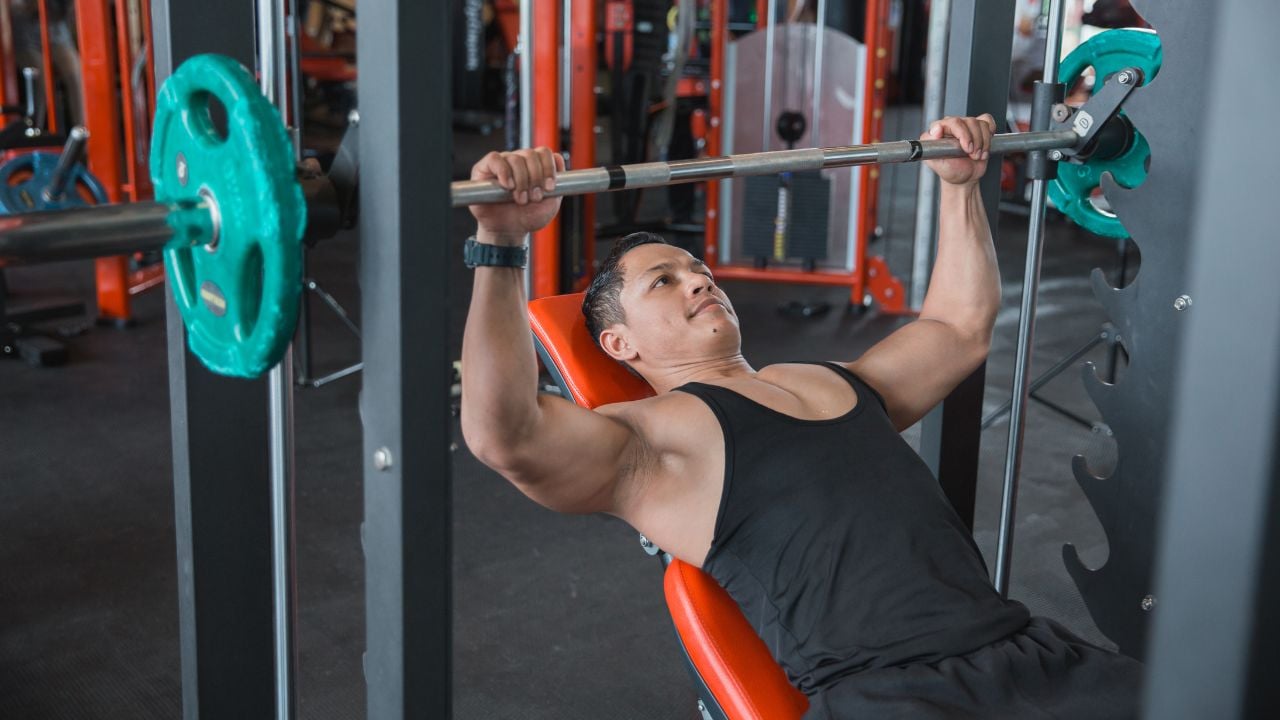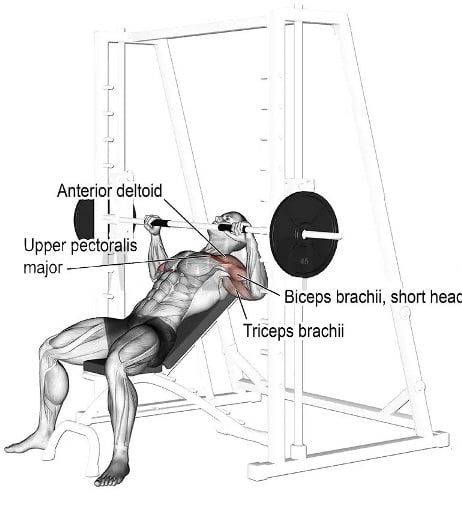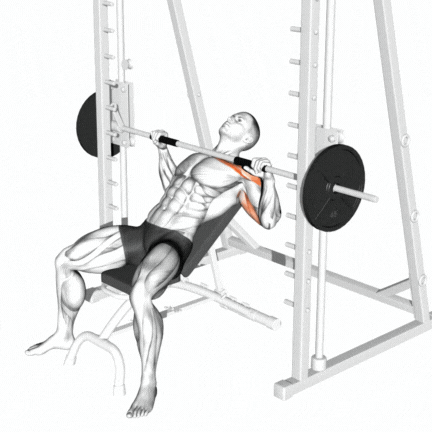The Smith machine is popular among bodybuilders and powerlifters who want to make their incline press more powerful. It lets you lift heavier weights without balancing or stabilizing the bar. This helps you get stronger and make your chest muscles bigger.
The smith machine bench press can be done in different ways, including incline press. It works on the chest muscles, especially the upper part of the pectoralis major muscle.
Compared to traditional free-weight incline bench press, smith provides added stability that makes it easier to focus on the targeted muscles without worrying about the weight of the barbell. It also provides a great safety option, especially when lifting without a gym buddy or spotter.

Smith Machine Incline Press Angle
As we know, the incline smith machine bench press will work the upper part of your chest more than a flat or decline bench press.
If you want to increase the stimulation of the upper chest, you should aim for an angle of at least 30 degrees. The study found that the most activity for the upper part of the pectoralis major muscle occurred when the bench was angled at 30–45 degrees.
And the higher you go, the more upper pecs to front deltoid you train. I wouldn’t fixate too hard on this. If 30* feels good for you, then stick with that. 45* will work far more upper pecs to front shoulders.
Start with a medium incline of 30 and gradually increase to a 45 angle based on your preferences and desired muscle emphasis.
Smith Machine Incline Muscles Worked
- The incline Smith press primarily works the Pectoralis Major (Upper Chest) and Anterior Deltoids (Front Shoulders).
- The incline chest press involves several secondary muscles: Triceps Brachii and Serratus Anterior,
- A handful of other muscles work or play the role of stabilizer muscles, including your Rotator Cuff Muscles, Core muscles, Biceps brachii, Rhomboids, Latissimus dorsi, and Wrist flexors.

How To Smith Machine Incline Press
- Position yourself on an incline bench set at about 30–45 degrees, so the bar touches the top of your chest just below your collarbone.
- Once your position is set, get up and load the bar, then lie back onto the bench.
- Grasp the bar with a slightly wider than shoulder-width grip.
- Press the bar straight up, stopping just short of elbow lockout.
- Feel your pecs contract to bring your arms up above your torso.
- Pause at the top and lower the bar under control to your upper chest.
- Do 8-10 reps and 3-4 sets for hypertrophy.

Proper Technique And Form
- Place the bench directly underneath the bar, just above your upper chest.
- Plant your feet firmly on the ground about hip-width apart to create a stable base.
- Use a shoulder-width grip or slightly wider. Do not grip the bar too narrowly.
- Keep your elbows tucked in close to your sides as you unrack the bar. Avoid flaring elbows out.
- Keep your head, shoulders, and buttocks in contact with the bench.
- Inhale as you slowly lower the bar to the upper of your chest in a controlled manner. Do not bounce or slam the bar down.
- Your elbows should be slightly tucked in, not flared out, to better engage the chest, shoulder and triceps.
- Use a full range of motion on every rep. Control the bar both downward and upward.
- If using heavy weights, do not arch your back excessively or lift your hips off the bench.
- After completing your set, carefully rotate the bar back into the safety hooks.
- For muscle endurance, do 15-20+ reps with moderate resistance.
- For muscle strength, Do 6–10 reps with a heavy load.
- For muscle hypertrophy (increased muscle size), do 8–12 reps with moderate to heavy load.

Manish is a NASM-certified fitness and nutrition coach with over 10 years of experience in weight lifting and fat loss fitness coaching. He specializes in gym-based training and has a lot of knowledge about exercise, lifting technique, biomechanics, and more.
Through “Fit Life Regime,” he generously shares the insights he’s gained over a decade in the field. His goal is to equip others with the knowledge to start their own fitness journey.
